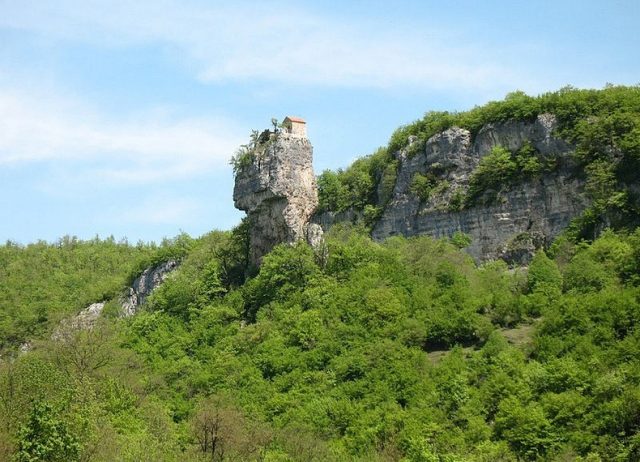The Discovery of the leftovers of a wine cellar also undermined the idea of exciting asceticism flourishing on the pillar. In 2007, a slight limestone plate with the asomtavruli Georgian inscriptions was found, paleographically dated to the 13th century and revealing the name of a certain “Giorgi”, responsible for the construction of three hermit cells. The inscription also makes mention of the Pillar of Life, echoing the popular tradition of veneration of the rock as a symbol of the True Cross.
/ month
placeholder text
Post List
Editor's Picks
The New York Luxurious Library Hotel
New York City’s Luxurious Library Hotel is every bibliophile’s...
3 Reasons Why College Essays Are Worth the Trouble
Essay writing is inevitable in your academic journey to...
The Blue Puya Flower: Nature’s Breathtaking Delight
Yes, blue puya (Puya berteroniana) is a real plant!...
Man Flinging a Thermos of Hot Tea in Subzero Temperatures
Magnificent Photo Shots Captures Man Flinging a Thermos of...
Why Sodium was Disposed of in Lake Lenore?
Why Sodium was Disposed of in Lake Lenore? -...
Palawan Island – Most Exotic Island on Earth
The Philippines Outcrop of Palawan is the Most Exotic...
You’ll induce to Travel to Norway to See These Amazing Pictures
You’ll induce to Travel to Norway to See These...
The Bird’s Nest House Perched High in a Swedish Forest
The Bird’s Nest House Perched High in a Swedish...
Don't Miss
The Mystical Marble Caves of Patagonia, Chile
South American Patagonia is one of the most magical...
A Luxury Island has gone on the market for $11million.
You will have a blast on a luxury Island...
The Electroencephalogram – 1924
The Electroencephalogram
Unlocking the brain's secrets what happens in the...
Best Family Holidays in Asia for Adventure Lovers
Best Family Holidays in Asia for Adventure Lovers
Being with...
Steller’s Jay: The Aggressive Bird with a Fearless Attitude
The Steller's Jay is a familiar scavenger that mostly...
Silver-crowned Friarbird (Philemon argenticeps)
Silver-crowned friarbird (Philemon argenticeps) rolling clank can be heard...
Shifen Waterfall – The Little Niagara of Taiwan
In the Pingxi District, New Taipei City, a gorgeous...
Calico – The Ghost Town of California
Calico ghost town located in the Calico Mountains founded...
Charismatic Planet © 2024 . All Rights Reserved.
















